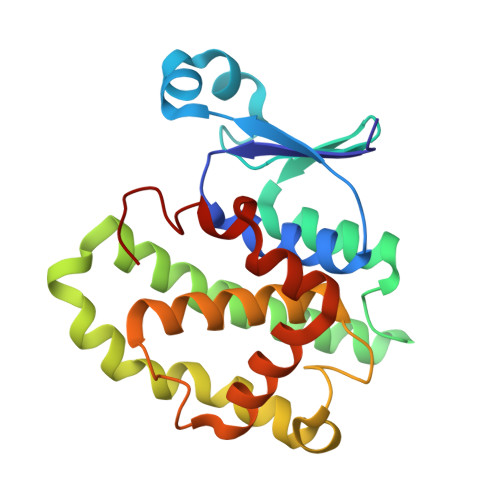The Ligandin (Non-Substrate) Binding Site of Human Pi Class Glutathione Transferase is Located in the Electrophile Binding Site (H-Site).
Oakley, A.J., Lo Bello, M., Nuccetelli, M., Mazzetti, A.P., Parker, M.W.(1999) J Mol Biology 291: 913
- PubMed: 10452896
- DOI: https://doi.org/10.1006/jmbi.1999.3029
- Primary Citation of Related Structures:
12GS, 13GS, 18GS, 19GS, 20GS - PubMed Abstract:
Glutathione S -transferases (GSTs) play a pivotal role in the detoxification of foreign chemicals and toxic metabolites. They were originally termed ligandins because of their ability to bind large molecules (molecular masses >400 Da), possibly for storage and transport roles. The location of the ligandin site in mammalian GSTs is still uncertain despite numerous studies in recent years. Here we show by X-ray crystallography that the ligandin binding site in human pi class GST P1-1 occupies part of one of the substrate binding sites. This work has been extended to the determination of a number of enzyme complex crystal structures which show that very large ligands are readily accommodated into this substrate binding site and in all, but one case, causes no significant movement of protein side-chains. Some of these molecules make use of a hitherto undescribed binding site located in a surface pocket of the enzyme. This site is conserved in most, but not all, classes of GSTs suggesting it may play an important functional role.
- The Ian Potter Foundation Protein Crystallography Laboratory, St. Vincent's Institute of Medical Research, Fitzroy, Victoria, 3065, Australia.
Organizational Affiliation:



















